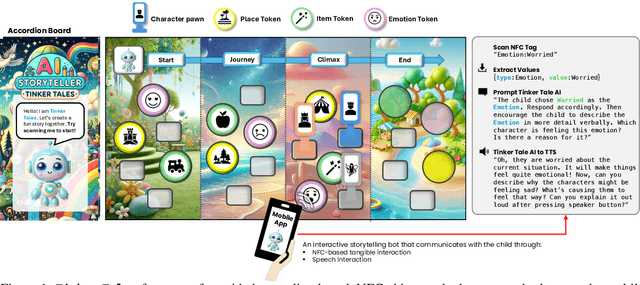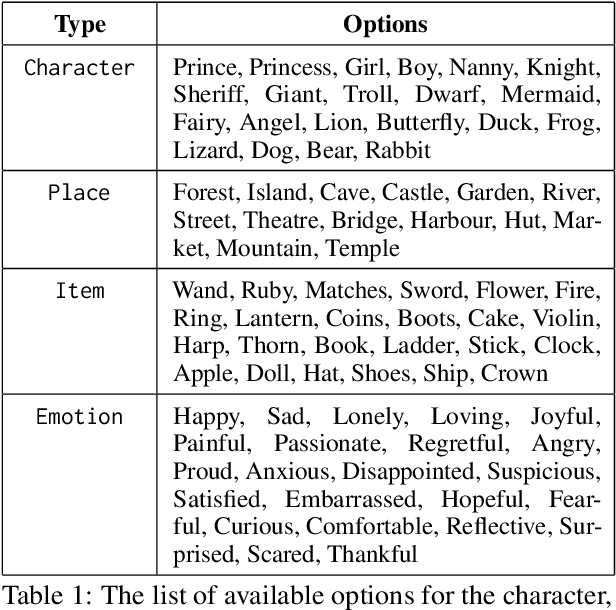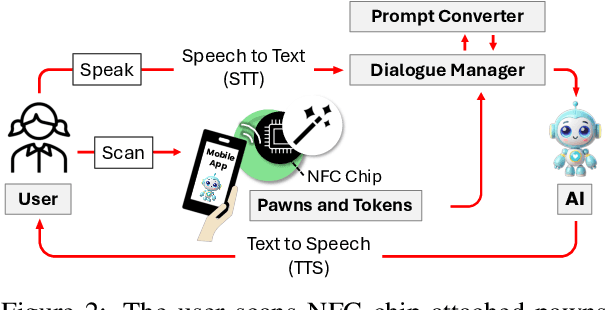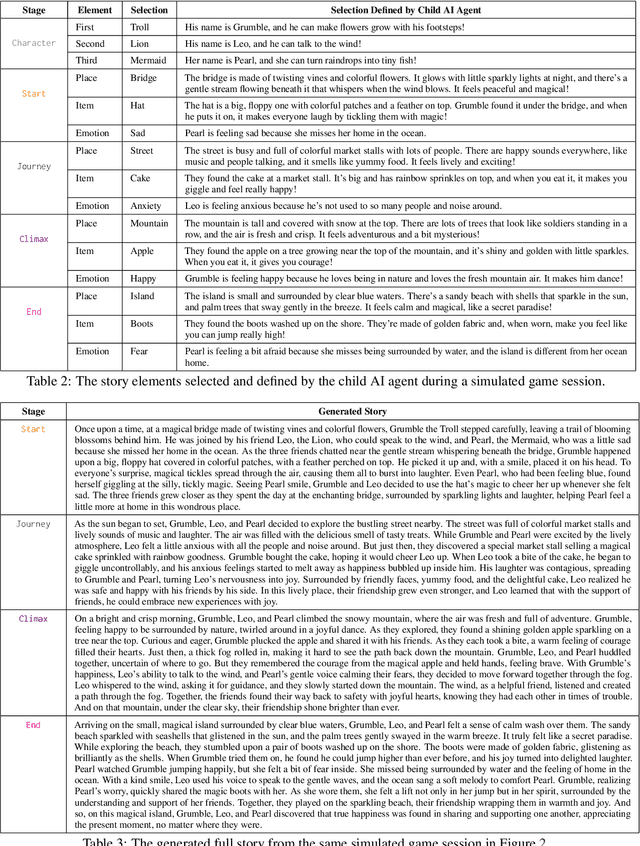Jinho D. Choi
LLM-as-a-Grader: Practical Insights from Large Language Model for Short-Answer and Report Evaluation
Nov 17, 2025Abstract:Large Language Models (LLMs) are increasingly explored for educational tasks such as grading, yet their alignment with human evaluation in real classrooms remains underexamined. In this study, we investigate the feasibility of using an LLM (GPT-4o) to evaluate short-answer quizzes and project reports in an undergraduate Computational Linguistics course. We collect responses from approximately 50 students across five quizzes and receive project reports from 14 teams. LLM-generated scores are compared against human evaluations conducted independently by the course teaching assistants (TAs). Our results show that GPT-4o achieves strong correlation with human graders (up to 0.98) and exact score agreement in 55\% of quiz cases. For project reports, it also shows strong overall alignment with human grading, while exhibiting some variability in scoring technical, open-ended responses. We release all code and sample data to support further research on LLMs in educational assessment. This work highlights both the potential and limitations of LLM-based grading systems and contributes to advancing automated grading in real-world academic settings.
Do We Still Need Audio? Rethinking Speaker Diarization with a Text-Based Approach Using Multiple Prediction Models
Jun 12, 2025



Abstract:We present a novel approach to Speaker Diarization (SD) by leveraging text-based methods focused on Sentence-level Speaker Change Detection within dialogues. Unlike audio-based SD systems, which are often challenged by audio quality and speaker similarity, our approach utilizes the dialogue transcript alone. Two models are developed: the Single Prediction Model (SPM) and the Multiple Prediction Model (MPM), both of which demonstrate significant improvements in identifying speaker changes, particularly in short conversations. Our findings, based on a curated dataset encompassing diverse conversational scenarios, reveal that the text-based SD approach, especially the MPM, performs competitively against state-of-the-art audio-based SD systems, with superior performance in short conversational contexts. This paper not only showcases the potential of leveraging linguistic features for SD but also highlights the importance of integrating semantic understanding into SD systems, opening avenues for future research in multimodal and semantic feature-based diarization.
TRUST: An LLM-Based Dialogue System for Trauma Understanding and Structured Assessments
Apr 30, 2025



Abstract:Objectives: While Large Language Models (LLMs) have been widely used to assist clinicians and support patients, no existing work has explored dialogue systems for standard diagnostic interviews and assessments. This study aims to bridge the gap in mental healthcare accessibility by developing an LLM-powered dialogue system that replicates clinician behavior. Materials and Methods: We introduce TRUST, a framework of cooperative LLM modules capable of conducting formal diagnostic interviews and assessments for Post-Traumatic Stress Disorder (PTSD). To guide the generation of appropriate clinical responses, we propose a Dialogue Acts schema specifically designed for clinical interviews. Additionally, we develop a patient simulation approach based on real-life interview transcripts to replace time-consuming and costly manual testing by clinicians. Results: A comprehensive set of evaluation metrics is designed to assess the dialogue system from both the agent and patient simulation perspectives. Expert evaluations by conversation and clinical specialists show that TRUST performs comparably to real-life clinical interviews. Discussion: Our system performs at the level of average clinicians, with room for future enhancements in communication styles and response appropriateness. Conclusions: Our TRUST framework shows its potential to facilitate mental healthcare availability.
Generative Induction of Dialogue Task Schemas with Streaming Refinement and Simulated Interactions
Apr 25, 2025Abstract:In task-oriented dialogue (TOD) systems, Slot Schema Induction (SSI) is essential for automatically identifying key information slots from dialogue data without manual intervention. This paper presents a novel state-of-the-art (SoTA) approach that formulates SSI as a text generation task, where a language model incrementally constructs and refines a slot schema over a stream of dialogue data. To develop this approach, we present a fully automatic LLM-based TOD simulation method that creates data with high-quality state labels for novel task domains. Furthermore, we identify issues in SSI evaluation due to data leakage and poor metric alignment with human judgment. We resolve these by creating new evaluation data using our simulation method with human guidance and correction, as well as designing improved evaluation metrics. These contributions establish a foundation for future SSI research and advance the SoTA in dialogue understanding and system development.
Secure Multifaceted-RAG for Enterprise: Hybrid Knowledge Retrieval with Security Filtering
Apr 18, 2025Abstract:Existing Retrieval-Augmented Generation (RAG) systems face challenges in enterprise settings due to limited retrieval scope and data security risks. When relevant internal documents are unavailable, the system struggles to generate accurate and complete responses. Additionally, using closed-source Large Language Models (LLMs) raises concerns about exposing proprietary information. To address these issues, we propose the Secure Multifaceted-RAG (SecMulti-RAG) framework, which retrieves not only from internal documents but also from two supplementary sources: pre-generated expert knowledge for anticipated queries and on-demand external LLM-generated knowledge. To mitigate security risks, we adopt a local open-source generator and selectively utilize external LLMs only when prompts are deemed safe by a filtering mechanism. This approach enhances completeness, prevents data leakage, and reduces costs. In our evaluation on a report generation task in the automotive industry, SecMulti-RAG significantly outperforms traditional RAG - achieving 79.3 to 91.9 percent win rates across correctness, richness, and helpfulness in LLM-based evaluation, and 56.3 to 70.4 percent in human evaluation. This highlights SecMulti-RAG as a practical and secure solution for enterprise RAG.
D-GEN: Automatic Distractor Generation and Evaluation for Reliable Assessment of Generative Model
Apr 18, 2025Abstract:Evaluating generative models with open-ended generation is challenging due to inconsistencies in response formats. Multiple-choice (MC) evaluation mitigates this issue, but generating high-quality distractors is time-consuming and labor-intensive. We introduce D-GEN, the first open-source distractor generator model that transforms open-ended data into an MC format. To evaluate distractor quality, we propose two novel methods: (1) ranking alignment, ensuring generated distractors retain the discriminatory power of ground-truth distractors, and (2) entropy analysis, comparing model confidence distributions. Our results show that D-GEN preserves ranking consistency (Spearman's rho 0.99, Kendall's tau 0.94) and closely matches the entropy distribution of ground-truth distractors. Human evaluation further confirms the fluency, coherence, distractiveness, and incorrectness. Our work advances robust and efficient distractor generation with automated evaluation, setting a new standard for MC evaluation.
Tinker Tales: Interactive Storytelling Framework for Early Childhood Narrative Development and AI Literacy
Apr 17, 2025



Abstract:This paper presents Tinker Tales, an interactive storytelling framework in the format of a board game, designed to support both narrative development and AI literacy in early childhood. The framework integrates tangible and speech-based interactions with AI through NFC chip-attached pawns and tokens, along with a speaker and microphone. Children select and define key story elements-such as characters, places, items, and emotions-using the pawns and tokens, providing further details to the AI and receiving proper assistance, similar to how adults prompt AI for specific tasks (e.g., writing). For evaluation, several game sessions were simulated with a child AI agent, and the quality and safety of the generated stories were assessed from various perspectives. This work highlights the potential of combining physical and digital elements in AI literacy, offering a safe and engaging way for children to learn how to effectively collaborate with AI.
Trustworthy Answers, Messier Data: Bridging the Gap in Low-Resource Retrieval-Augmented Generation for Domain Expert Systems
Feb 26, 2025Abstract:RAG has become a key technique for enhancing LLMs by reducing hallucinations, especially in domain expert systems where LLMs may lack sufficient inherent knowledge. However, developing these systems in low-resource settings introduces several challenges: (1) handling heterogeneous data sources, (2) optimizing retrieval phase for trustworthy answers, and (3) evaluating generated answers across diverse aspects. To address these, we introduce a data generation pipeline that transforms raw multi-modal data into structured corpus and Q&A pairs, an advanced re-ranking phase improving retrieval precision, and a reference matching algorithm enhancing answer traceability. Applied to the automotive engineering domain, our system improves factual correctness (+1.94), informativeness (+1.16), and helpfulness (+1.67) over a non-RAG baseline, based on a 1-5 scale by an LLM judge. These results highlight the effectiveness of our approach across distinct aspects, with strong answer grounding and transparency.
Finding A Voice: Evaluating African American Dialect Generation for Chatbot Technology
Jan 07, 2025Abstract:As chatbots become increasingly integrated into everyday tasks, designing systems that accommodate diverse user populations is crucial for fostering trust, engagement, and inclusivity. This study investigates the ability of contemporary Large Language Models (LLMs) to generate African American Vernacular English (AAVE) and evaluates the impact of AAVE usage on user experiences in chatbot applications. We analyze the performance of three LLM families (Llama, GPT, and Claude) in producing AAVE-like utterances at varying dialect intensities and assess user preferences across multiple domains, including healthcare and education. Despite LLMs' proficiency in generating AAVE-like language, findings indicate that AAVE-speaking users prefer Standard American English (SAE) chatbots, with higher levels of AAVE correlating with lower ratings for a variety of characteristics, including chatbot trustworthiness and role appropriateness. These results highlight the complexities of creating inclusive AI systems and underscore the need for further exploration of diversity to enhance human-computer interactions.
Transforming Slot Schema Induction with Generative Dialogue State Inference
Aug 03, 2024



Abstract:The challenge of defining a slot schema to represent the state of a task-oriented dialogue system is addressed by Slot Schema Induction (SSI), which aims to automatically induce slots from unlabeled dialogue data. Whereas previous approaches induce slots by clustering value spans extracted directly from the dialogue text, we demonstrate the power of discovering slots using a generative approach. By training a model to generate slot names and values that summarize key dialogue information with no prior task knowledge, our SSI method discovers high-quality candidate information for representing dialogue state. These discovered slot-value candidates can be easily clustered into unified slot schemas that align well with human-authored schemas. Experimental comparisons on the MultiWOZ and SGD datasets demonstrate that Generative Dialogue State Inference (GenDSI) outperforms the previous state-of-the-art on multiple aspects of the SSI task.
 Add to Chrome
Add to Chrome Add to Firefox
Add to Firefox Add to Edge
Add to Edge